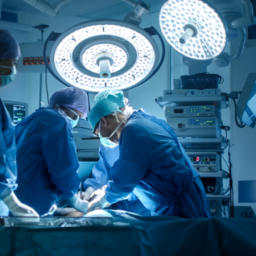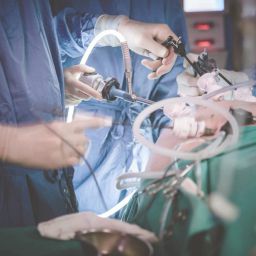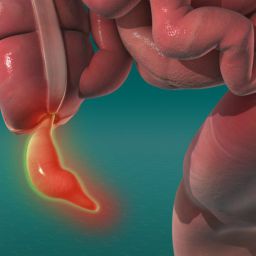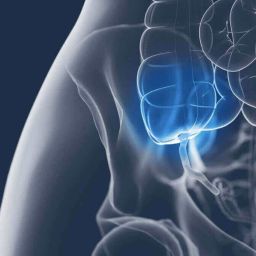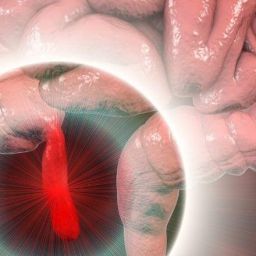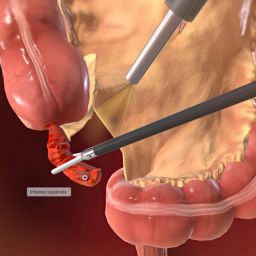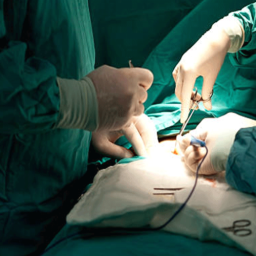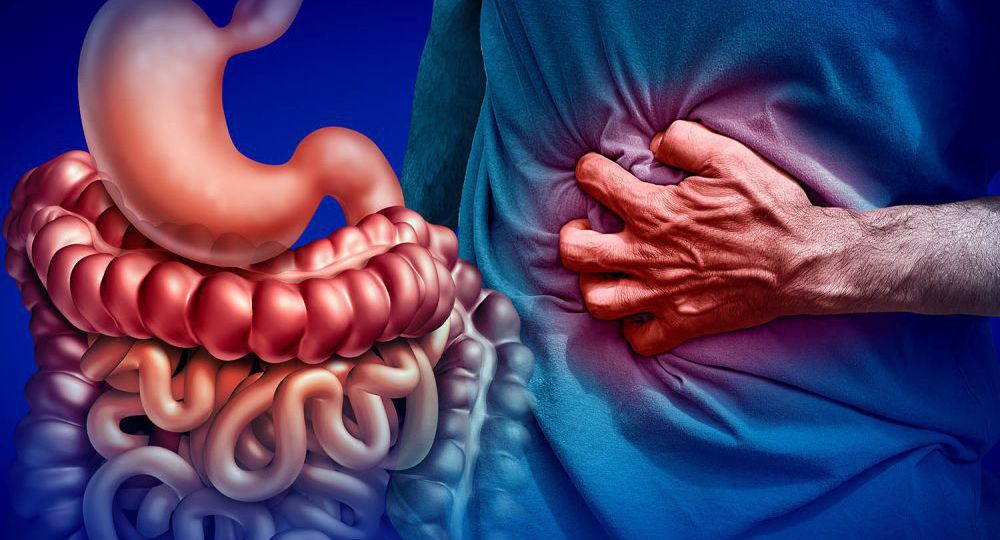
1. Surgical Site Infection (SSI)
One of the most common complications following appendectomy is a surgical site infection (SSI). Infections occur when bacteria enter the surgical wound, leading to symptoms such as redness, swelling, pain, and pus formation. The risk of developing an infection is higher if the appendix has ruptured prior to surgery, as it can spread bacteria throughout the abdominal cavity.
Causes of SSI:
- Contaminated Surgical Tools: Bacteria can enter through surgical instruments that are not properly sterilized.
- Contaminated Abdominal Cavity: If the appendix ruptures or if there is peritonitis (inflammation of the peritoneum), bacteria can contaminate the surgical site.
- Poor Wound Care: Failure to follow proper post-operative wound care instructions, including cleaning and protecting the incision site, increases the risk of infection.
Symptoms of SSI:
- Redness, swelling, and warmth around the incision site
- Discharge of pus or foul-smelling fluid from the wound
- Fever and chills
- Increased pain at the surgical site
How to Resolve Surgical Site Infections:
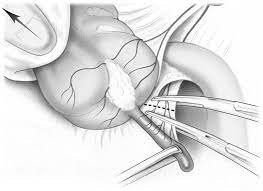
- Antibiotics: Most SSIs are treated with antibiotics to eliminate the infection. If the infection is severe, intravenous (IV) antibiotics may be necessary.
- Drainage: In cases where an abscess forms, the infection site may need to be drained.
- Wound Cleaning and Dressing: The wound should be cleaned regularly, and proper dressing should be applied to prevent further contamination.
- Surgical Intervention: If the infection becomes widespread or the abscess cannot be drained effectively, additional surgery may be needed to clean the area.
2. Abdominal Abscess Formation
An abscess is a collection of pus that forms in the abdominal cavity, usually after the appendix ruptures. It can occur if bacteria or infected material spreads beyond the site of the appendix and infects nearby tissues.
Causes of Abdominal Abscess:
- Appendix Rupture: A ruptured appendix is one of the leading causes of abdominal abscess formation, as it allows bacteria to escape into the abdominal cavity.
- Inadequate Drainage: If the abdominal cavity is not adequately drained after the surgery, fluid and bacteria can collect and form an abscess.
Symptoms of Abdominal Abscess:
- Fever and chills
- Persistent abdominal pain
- Nausea and vomiting
- Tenderness in the abdomen
- Difficulty passing gas or having bowel movements
How to Resolve Abdominal Abscess Formation:
- Antibiotics: Treatment often starts with broad-spectrum antibiotics to control the infection.
- Percutaneous Drainage: In many cases, an abscess can be drained with a needle or catheter inserted into the abdominal cavity. This is typically guided by imaging such as ultrasound or CT scans.
- Surgical Drainage: If percutaneous drainage is not effective or the abscess is too large, surgical drainage may be necessary to remove the infected material.
3. Bowel Obstruction
Bowel obstruction is another potential complication of appendectomy. It occurs when the normal flow of bowel contents is disrupted, usually due to scar tissue, adhesions, or inflammation. In some cases, a bowel obstruction can occur shortly after the surgery.

Causes of Bowel Obstruction:
- Adhesions: Adhesions are bands of fibrous tissue that can form between organs after surgery. These adhesions can cause parts of the bowel to stick together, resulting in an obstruction.
- Infection: Inflammation and infection in the abdominal cavity can also lead to a temporary or permanent blockage of the intestines.
- Intestinal Injury: If the surgeon inadvertently injures the intestine during the procedure, it may lead to a blockage.
Symptoms of Bowel Obstruction:
- Severe abdominal pain and cramping
- Bloating and distention of the abdomen
- Nausea and vomiting
- Inability to pass gas or have bowel movements
How to Resolve Bowel Obstruction:
- Nasogastric Tube (NG Tube): In cases of partial bowel obstruction, a tube may be inserted through the nose into the stomach to relieve pressure and allow the intestines to heal.
- Surgical Correction: If the obstruction is caused by adhesions or other physical blockages, surgery may be needed to remove the obstruction or correct the underlying issue.
- Dietary Modifications: If the bowel obstruction is mild, changes to the diet and the introduction of clear liquids may help resolve the issue.
4. Peritonitis
Peritonitis is a life-threatening infection of the peritoneum, the membrane that lines the abdominal cavity. It is most often caused by the rupture of the appendix, which releases bacteria into the abdominal cavity.

Causes of Peritonitis:
- Appendix Rupture: When the appendix bursts, bacteria and waste products from the intestines can spill into the sterile abdominal cavity, leading to peritonitis.
- Delayed Surgery: A delay in performing the appendectomy after the appendix has ruptured increases the likelihood of peritonitis.
- Post-Surgical Infections: In some cases, infection following surgery can lead to peritonitis.
Symptoms of Peritonitis:
- Severe abdominal pain, often diffuse and worsening
- High fever and chills
- Rapid breathing and heart rate
- Nausea, vomiting, and loss of appetite
- Abdominal tenderness and rigidity
How to Resolve Peritonitis:
- Antibiotics: Intravenous antibiotics are used immediately to treat the infection.
- Surgical Intervention: In cases of widespread infection, surgery is necessary to clean the peritoneum and remove any infected tissue.
- Drainage: If there is an abscess or fluid accumulation, drainage may be required.
5. Hernia at the Surgical Site
A hernia occurs when an organ or tissue pushes through a weak spot in the surrounding muscle or connective tissue. After an appendectomy, a hernia can form at the surgical site, particularly if the incision site does not heal properly.
Causes of Surgical Site Hernia:
- Weakness in Abdominal Wall: The abdominal wall can become weakened by the surgical incision, making it easier for internal tissues or organs to push through.
- Strain or Heavy Lifting: Straining or lifting heavy objects too soon after surgery can lead to the formation of a hernia.
- Infection or Poor Healing: Poor wound healing or infection can compromise the strength of the abdominal wall, increasing the risk of hernia formation.
Symptoms of Hernia:
- A noticeable bulge or lump near the surgical site
- Pain or tenderness at the site of the bulge
- Discomfort when coughing or lifting objects
- Digestive issues such as constipation or bloating
How to Resolve Surgical Site Hernia:
- Non-Surgical Management: Small hernias may be managed conservatively, particularly if they are not causing significant discomfort or complications.
- Surgical Repair: Larger or more painful hernias require surgical intervention to close the defect in the abdominal wall. This may involve a mesh implant to reinforce the area.
6. Post-Operative Bleeding
Bleeding is a rare but serious complication of appendectomy. If blood vessels are not properly sealed during surgery, bleeding can occur, either internally or at the surgical site.
Causes of Post-Operative Bleeding:
- Injury to Blood Vessels: If blood vessels are not properly controlled during surgery, they can bleed into the abdominal cavity.
- Coagulation Disorders: Patients with blood clotting disorders are at higher risk of bleeding.
- Infection or Inflammation: Inflammation following surgery can increase the likelihood of blood vessel rupture.
Symptoms of Post-Operative Bleeding:
- Increased pain at the surgical site
- Swelling or bruising around the incision
- Lightheadedness or fainting
- Rapid heart rate and low blood pressure
How to Resolve Post-Operative Bleeding:
- Pressure and Observation: Small amounts of bleeding may resolve with the application of pressure and observation.
- Surgical Intervention: If the bleeding is significant, surgery may be needed to control the bleeding and repair damaged blood vessels.
While appendectomy is generally a safe and effective procedure, like any surgery, it carries the risk of complications. Recognizing the signs of common complications such as infections, abscesses, bowel obstructions, peritonitis, hernias, and bleeding is essential for ensuring prompt and effective treatment. By understanding these complications and the methods for resolving them, both patients and healthcare providers can work together to ensure a successful recovery.
Patients who experience symptoms related to these complications should seek immediate medical attention to prevent more severe outcomes and to ensure optimal recovery. The key to successful post-appendectomy recovery lies in early detection, proper management, and ongoing medical support.

